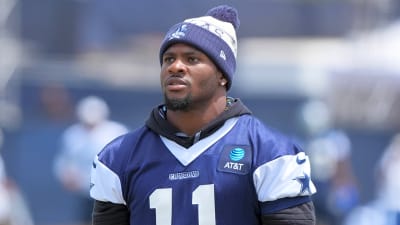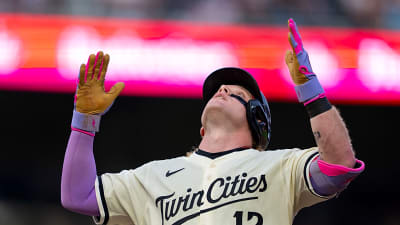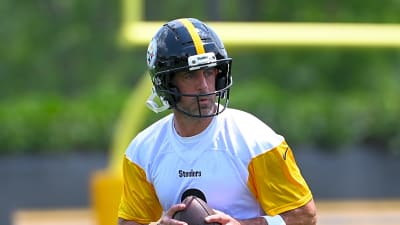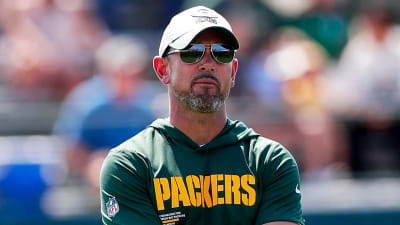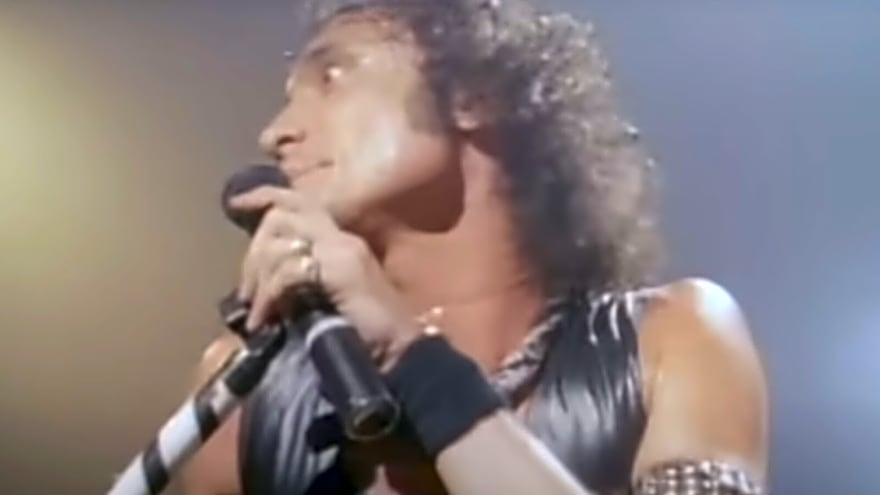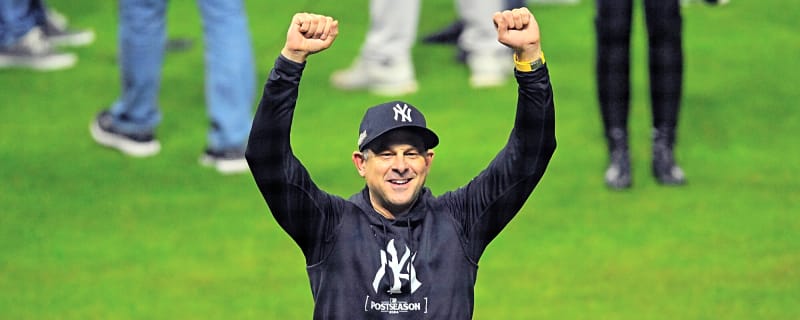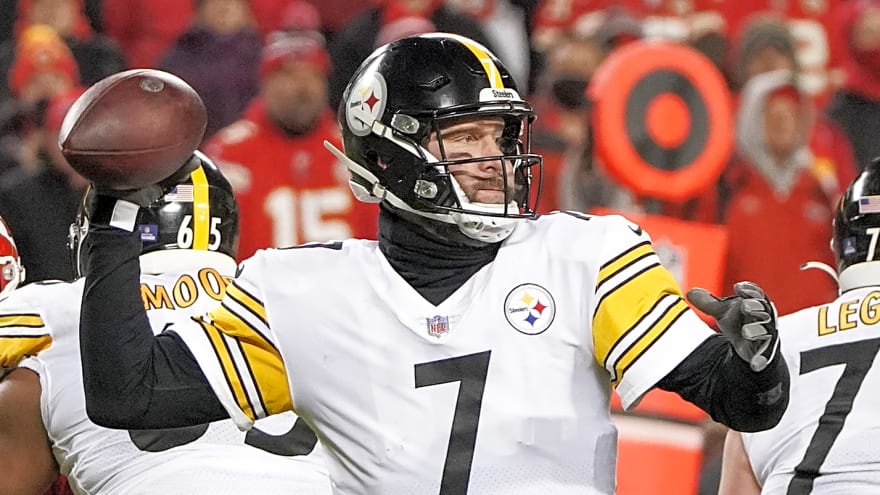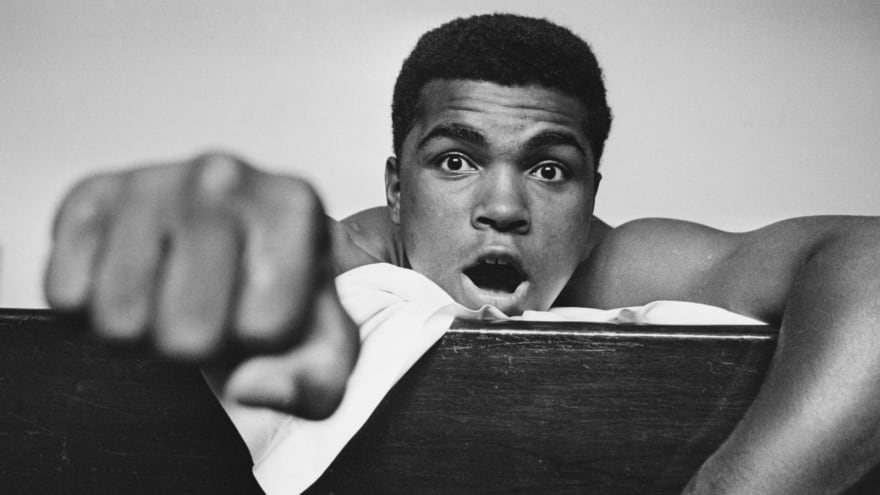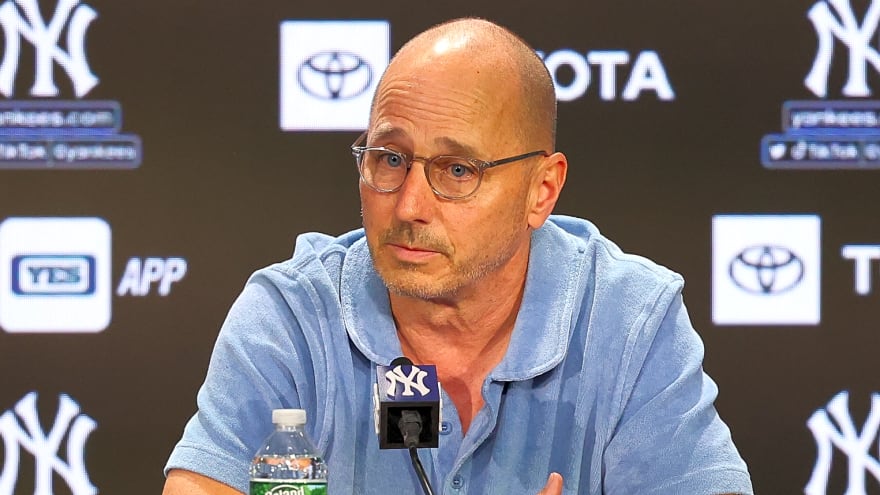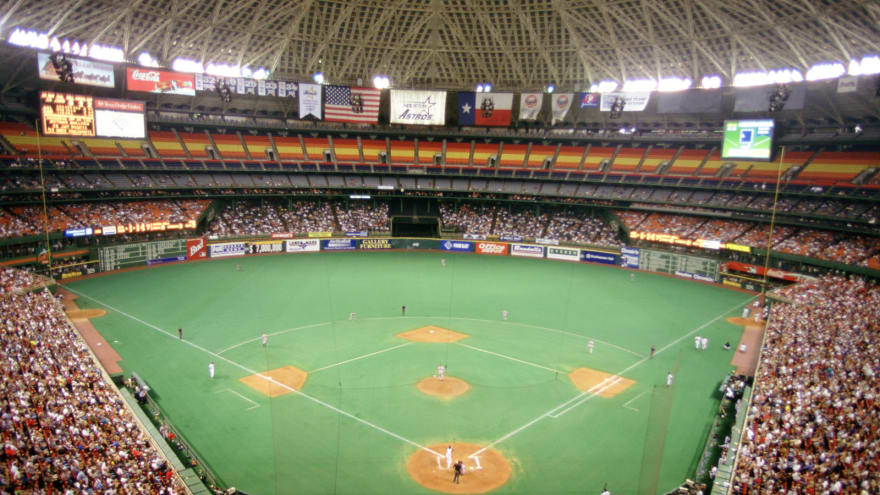In the summer of 1930, Celtic decided to resume the running of a reserve team, or 2nd XI, “which gives the players who are not members of the League team the opportunity of playing every week, and when the call comes for them to face experienced opponents, mind and muscle are in harmony.”
One of my favourite images from the collection of memorabilia shared by the great-grandson of former Celtic, Scotland and Ireland trainer Will Quinn was a team photo of the 2nd XI taken ahead of that inaugural 1930/31 campaign. The Jungle enclosure is in the background and the squad is wearing Celtic’s distinctive change kit of the day, an Airdrieonians-esque white jersey with green ‘V’ complemented by black shorts and black, green and white socks.
The vast majority of players captured in the photo were immediately familiar to me following my research for the Celtic in the Thirties volumes, this group featuring predominantly in the first of those books, but my attention was immediately drawn to the gent standing on the right wearing the suit. Turns out this is John ‘Jack’ Quinn, Will’s son, and I believe this may be the only existing photograph of him as Celtic trainer. To add further poignancy, Jack’s dad Will had commenced a second spell as the first-team trainer at Parkhead that summer, completing a unique ‘father and son’ double act, whilst Jack’s own surviving sons Jim Quinn – now a sprightly 88 years young – and John, eight years his junior, will hopefully enjoy reading about the context behind this unique moment in time for their dad.
John ‘Jack’ Quinn was born at home in Fleming Street, Riccarton in the shadow of Kilmarnock’s Rugby Park on 20 July 1905, the first of five children for Will and Anastatia Quinn, nee McAvoy, who had married the previous summer in the bride’s home county of Kilkenny. We now know that Will was working as a trainer for Kilmarnock around that time, following the discovery of a letter of reference from the Ayrshire club dated 31 January 1907.
Jack’s baby sister Anastatia Grace Quinn was born at the Riccarton home on 22 October 1907, whilst in the interim both his paternal grandparents had passed away, Rosina Quinn in March 1906 and Michael Quinn just a few weeks before that letter was written in January 1907.
With his parents gone Will takes his family to Ireland, and by April 1911 the Quinns are living in South Dublin but before the end of that year Will has commenced his long career as Celtic’s trainer. Jack and Anastatia Grace are joined by three siblings, Rosina in April 1913, Nora in October 1914 and finally Michael in June 1918, all born in the family home at 148 Crail Street, off Tollcross Road. Tragically, Rosina would suffer from pulmonary phthisis for three years before it developed into pneumonia and claimed her life shortly after her 14th birthday in May 1927, and sister Nora would succumb to the same illness just over a decade later, in January 1938, aged 23. Nora and elder brother Jack had acted as witnesses to the marriage of their sister Anastatia Grace to Albert Ellerby at St Michael’s RC Church, Parkhead in August 1929. At that time the Quinn family resided at 1395 London Road, just along from Celtic Park.
Jack would take the plunge himself three years later, by which time he was an employee of Celtic. At St Thomas’ RC Church, Riddrie on 2 July 1932, 26-year-old John Quinn, a football club groundsman, married Elsie Lynn, a 22-year-old draper’s saleswoman residing at 170 Marfield St, Carntyne. Jack’s father William Quinn is also listed as a football club groundsman, as a few months earlier Jack Qusklay had arrived from Dundee United to replace him as first-team coach. Jack’s mother is recorded as Statia Quinn, nee McAvoy, whilst Elsie’s parents are brewery cellarman James Lynn and his wife, also named Elsie, nee McCulloch.
Jack and Elsie Quinn would be blessed by six children, Elsie Mary (born 1933), Rosina Mary (born 1934), James (Jim, born 1937), William (Billy, born 1938), John Lynn (born 1945) and Anastatia (born 1946). Tragedy struck in the early hours of 22 May 1933 when baby Elsie died within 23 hours of birth at Glasgow’s Rottenrow Maternity Hospital, continuing an unwanted family history, Jack’s father Will having buried three daughters. The family initially lived at 251 Bernard Street in Glasgow’s east end but relocated to Sorn, East Ayrshire in 1939/40 following Will’s death and indeed the two youngest Quinn children were born there. Jack was living at 11 Firpark, Sorn when he registered his mum Anastatia’s death in January 1959 then the passing of his beloved Elsie a decade later, in February 1969.
Jack Quinn died in Sorn in April 1988 as his beloved Celtic won a dramatic Scottish Cup semi-final against Hearts at Hampden with last-gasp goals from Andy Walker and Mark McGhee to keep Billy McNeill’s men on track for that magical Centenary Double. He was 82 years old.
So that was Jack’s story, but let’s go back to the photo from summer 1930 when the 25-year-old lined up proudly alongside 16 young men hoping to be the next Celtic sensation, to join the Thomsons, McGrorys and Scarffs in creating history for the Grand Old Team. Two of those would be in Willie Maley’s last great team which lifted the Scottish League title and Empire Exhibition Trophy eight years later, others would live the dream by wearing those Hoops in first-team matches, whilst a few never took that final step up and remain largely unknown as yet from a Celtic perspective. That being the case, for several of these players this will be the only surviving image of them wearing Celtic’s colours and it’s wonderful to be able to share it.
Many of the players in this photo lined up as Celtic’s 2nd XI commenced their Scottish Alliance campaign with a 4-2 win over Kilmarnock’s second string at Rugby Park on Saturday, 9 August 1930, just a few minutes’ walk from the house where Jack Quinn had been born 25 years earlier. His chosen team was as follows:
Ewing; Jock Morrison & Jack Ferguson;
Joe Buchanan, Denis Currie & McCann;
Bertie Thomson, Hugh Smith, Joe Cowan, Joe McGhie & Peter Kavanagh.
Here’s a brief resume of the Celtic careers of our Alliance Class of 1930, who ended the season in fifth spot in the 16-club table behind Rangers, Motherwell, Aberdeen and Hearts, largely due to their poor away record.
Back row, from left:
Denis McCallum
Signed in 1926 from St Anthony’s, winger Denis had real Celtic DNA, being the great-nephew of our first-ever goalscorer Neil McCallum. Most of his half-century of first-team appearances for Celtic were behind him at the time of the photo, Denis having made his debut back in April 1927 in a League defeat at Falkirk. He moved to Dundee United on loan in October 1930 and was involved in both of their goals in the 3-2 defeat to Celtic in the first round of the Scottish Cup three months later. Denis was released by Celtic in 1932 and finished his career in Ireland.
Jack Ferguson
Signed in 1929 from Maryhill Hibs, amateur defender Jack played just once for the first team, in a 1-0 win against Clyde in the Charity Cup semi-final at Celtic Park on 6 May 1930. He joined Brechin City in August 1932.
James Gallagher
Signed in 1929 from Intermediate outfit Shettleston Celtic, centre-half James made just two appearances for Celtic, a baptism of fire debut against Rangers at Ibrox in October 1929 followed by a home victory over Hibernian seven days later, those matches played either side of the Wall Street Crash! Following a series of loan moves, including a spell at Belfast Celtic, James was freed by Celtic in 1932 and resurfaced at non-League Nithsdale Wanderers.
Joseph Buchanan
Signed in 1930 from Port Glasgow Athletic, wing-half Joe did not play in the Celtic first team. He joined Albion Rovers in 1932 and was in the side which took eventual winners Celtic to a replay in the quarter-final of the Scottish Cup the following March.
J McCann
Signed in 1929 from Hurlford, according to the official handbook, there is some mystery and confusion as to who this player was. There was a Tom McCann from Saltcoats on the books from 1928 to 1930, but I’m struggling to place J McCann, although I’m fairly certain he would have been the player named at left-half for the Alliance match at Rugby Park in August 1930.
Middle row, from left:
Willie Hughes
Signed in 1929 from financially-stricken Bathgate following their resignation from the Scottish League, utility man Willie is fairly unique in that he played over 100 times for Celtic in a decade of service, married the sister of Bob Kelly yet largely flies under the radar. His intriguing story is featured in an article I wrote for The Celtic Star which can be accessed at the link below.
John Morrison
Signed from Croy Celtic in 1930 on the recommendation of legendary local man Jimmy Quinn, Jock would not establish himself as Celtic’s first-choice left-back until October 1935, despite making his debut five years earlier in a home League match against Aberdeen in September 1930, shortly after this photo was taken, and being included on the historic tour to the ‘New World’ the following summer. But Jock would go on to become a Celtic great, with over 200 games, two League titles, a Scottish Cup and Empire Exhibition Trophy to his name.
Ewing
The goalkeeper listed as Ewing is one of two mystery men in this photo, as I can find no trace of him as a senior footballer other than that Alliance match at Kilmarnock in August 1930. When first-choice Celtic keeper John Thomson was called up on Scotland business two months later, it was the recently-signed David Robertson – a fellow Fifer – who deputised for him rather than Ewing.
Bobby Whitelaw
Signed from Doncaster Rovers in 1930, wing-half Bobby made 19 appearances for Celtic in his two seasons at the club and was in the party which toured the USA and Canada in the summer of 1931. He made his first-team debut at Douglas Park in a goalless League draw with Hamilton Academical in September 1930 and won a Glasgow Cup medal in his second match the next month as Celtic beat Rangers 2-1 at Hampden on the day Ronnie Simpson was born. Bobby was another who left Celtic Park in 1932, following which he signed for Bournemouth.
Denis Currie
Signed from Croy Celtic in 1930, wing-half Denis was also on the 1931 tour of the USA and Canada but did not play a competitive match for Celtic. He joined Dunfermline Athletic in June 1932 and was in the team beaten 7-1 by Celtic at East End Park in the first round of the Scottish Cup seven months later.
Robert Millar
Signed from Motherwell Juniors in 1930, little was known of Robert other than that he had played and scored in a Celtic five-a-side team which took part in Glasgow Civic Week in June 1931, the first mention of the legendary Bobby Hogg wearing Celtic colours. However, I have now established that Robert was a left-back who joined Morton in June 1932 on his release from Celtic, having not made a competitive appearance for the club. He would return to Celtic Park with Morton on League business just two months later but also suffered a 7-1 hammering from his old colleagues, including Alliance teammate Chic Geatons.
Front row, from left:
Peter Kavanagh
Signed in 1929 from Bohemians, Dubliner Peter made his debut against Hearts on the day the new Celtic Park stand was opened in August 1929. He made around 40 appearances for Celtic and was capped by both versions of the Irish international team before his release in May 1932, following which he signed for Northampton Town.
Hugh Smith
Signed in 1930 from Port Glasgow Athletic, inside-forward Hugh made his first-team debut shortly the photo was taken, scoring the opening goal in a 6-0 League win over Hibernian at Celtic Park on 23 August 1930. Although Hugh travelled to North America with Celtic in 1931, he would add just one more goal in his 27 appearances in four seasons in the Hoops. He was freed in June 1934 and signed for Ayr United.
Chic Geatons
Signed in 1928 from Lochgelly Celtic, Chic had already made around 30 first-team appearances when that photo was taken, following his debut against Third Lanark in the Glasgow Cup at Cathkin in September 1928. That total would approach 400 before he retired in 1941. Wing-half Chic was a key member of Willie Maley’s great sides of the 1930s, winning two League titles, three Scottish Cups and the Empire Exhibition Trophy.
Joe McGhee
Signed in 1929 from Hurlford Juveniles, left-winger Joe made his first-team debut at no less an iconic venue than Wrigley Field, Chicago, scoring Celtic’s sixth goal in the 6-3 victory over the wonderfully named Bricklayers & Masons in June 1931. He followed that up with another in a 5-0 win over Michigan All-Stars at the University of Detroit four days later, Celtic’s first floodlit match. Joe made his competitive debut back in his native Ayrshire in October 1931, scoring twice in a 4-2 League victory over Ayr United at Somerset Park. Sadly, that match is remembered as the beginning of the end for teammate Peter Scarff, who was forced to leave the pitch whilst struggling for breath. Peter would wear his beloved Hoops just seven more times and would be dead within two years. The double at Somerset Park would prove to be Joe’s only goals in six competitive appearances for the club and he was freed at the end of that season, before moving south to join Sheffield Wednesday.
J Quinn
The final player in the photo, listed as J Quinn, is the second mystery man in the photo. I can find no trace of him as a senior footballer. One possibility, perhaps worth exploring, is that he is Jamie Quinn – younger son of the legendary Celt – who was starring as a winger at that time for Croy Celtic, from whom both Jock Morrison and Denis Currie had been signed.
I mentioned in these notes that several members of the Alliance team from the main photo travelled to the USA and Canada the following summer. Four of them are captured in this iconic image from that trip, taken in Detroit on 25 June 1931 and included in Volume One of my Celtic in the Thirties books.
Those Celts included in that photo are as follows.
Bobby Whitelaw (second left), Hugh Smith (next right), Joe McGhee (next again right, in front of Willie Maley) and Denis Currie (second right).
Hail, Hail!
Follow Matt on X/Twitter @Boola_vogue
Remember no paywall and content that is 100% written by actual Celtic supporters – that’s what you get on The Celtic Star. And our books are also written by Celtic supporter, order both volumes of Celtic in the Thirties by and save a tenner! Link below…
Summer sale now on! £5 off all books at Celticstarbooks.com/shop
More must-reads:
- Dolphins' Tyreek Hill stirs up drama, calls for teammate to be benched in certain situations
- 'Most likely scenario' for Terry McLaurin revealed
- The '250-strikeout MLB seasons' quiz
Breaking News
Trending News
Customize Your Newsletter
 +
+
Get the latest news and rumors, customized to your favorite sports and teams. Emailed daily. Always free!
TODAY'S BEST

Steelers Spark Crazy Trade Rumors After Cowboys' Micah Parsons' Prior Comments Resurface
Khan has openly said he will never pass up the chance to explore opportunities that could improve the team. On Friday, news broke that Parsons requested a trade out of Dallas. While the possibility of landing Parsons remains a long shot, this request provides Khan with a rare window to investigate whether there’s a way to bring one of the league’s most dominant pass rushers to Pittsburgh. Earlier in February 2025, Parsons spoke with former Steelers cornerback turned analyst Bryant McFadden about the Steelers. During the conversation, McFadden joked that the Steelers logo would look good on Parsons. Parsons responded playfully, saying he would love to play for Mike Tomlin, adding fuel to the speculation that a move to Pittsburgh might not be completely out of the question. "Nah, I rock with the Steelers," Parsons said. "I said if I ever return home it was going to be Pittsburgh. I mess with Mike Tomlin the long way." It’s no secret that Tomlin is one of the most popular head coaches in the NFL. Many players have expressed a strong desire to play for him, and that reputation has sometimes helped the Steelers attract top talent. A prime example of this is when the Steelers convinced four-time league MVP Aaron Rodgers to join the team, a move that energized the fanbase and boosted expectations. The idea of Parsons lining up alongside TJ Watt and the rest of Pittsburgh’s elite defense is both thrilling and intimidating. While it remains a very far-fetched possibility, Parsons’ recent comments about wanting to play for the Steelers have sparked excitement among fans. These remarks, made in 2025, add fuel to the speculation that a trade could be in the cards, even if the odds are slim. Parsons, who grew up in Harrisburg, Pennsylvania, shared a message on social media Friday explaining what really led to his trade request. If Parsons has any influence over his next destination, and if Khan can work his magic, the Steelers might just have a slim but real chance to pull off a trade. Landing Parsons would instantly make Pittsburgh’s defense one of the most fearsome in NFL history, though it remains an ambitious long shot. Steelers Chances Of Trading For Micah Parsons Are Low While the thought of Parsons playing in the black and gold for the 2025 season is certainly exciting, the logistics would be very complex, though not impossible. Parsons is clearly unhappy with the Cowboys, and Jerry Jones has not helped their chances of keeping him satisfied. He officially wants out, and now is the time for Khan to see if there’s any logical way to pull off a crazy trade.

Brewers Tried Bringing All-Star Slugger To Milwaukee: Report
The Milwaukee Brewers may not have added a big bat ahead of the 2025 Major League Baseball trade deadline, but it sounds like it wasn't from a lack of trying, at the very least. As the trade deadline approached, rumors swirled about various sluggers. The two that popped up the most when it came to the Brewers were Ryan O'Hearn, formerly of the Baltimore Orioles. Former Arizona Diamondbacks star Eugenio Suárez also was mentioned. Suárez was traded to the Seattle Mariners and O'Hearn was dealt to the San Diego Padres. Curt Hogg of the Milwaukee Journal Sentinel reported on Friday that the Brewers at least showed interest in O'Hearn on Friday, although they were unable to get a deal done. "Brewers were involved on O’Hearn today, sources said. But that counts for little, leaving them still without any additions other than Danny Jansen with 90 minutes to go," Hogg reported on Friday. O'Hearn would've been a solid pickup because of the fact that he has launched 13 homers and has driven in 43 runs this season. While this is the case, Milwaukee missed out. Positionally, there would've been some question marks, but that doesn't matter any longer. Now, the deadline is behind us and there's no need to think about or worry about what could'be been. This is a contender as is. It would've been nice to land someone like O'Hearn, but Milwaukee still has a 64-44 despite the offensive questions.
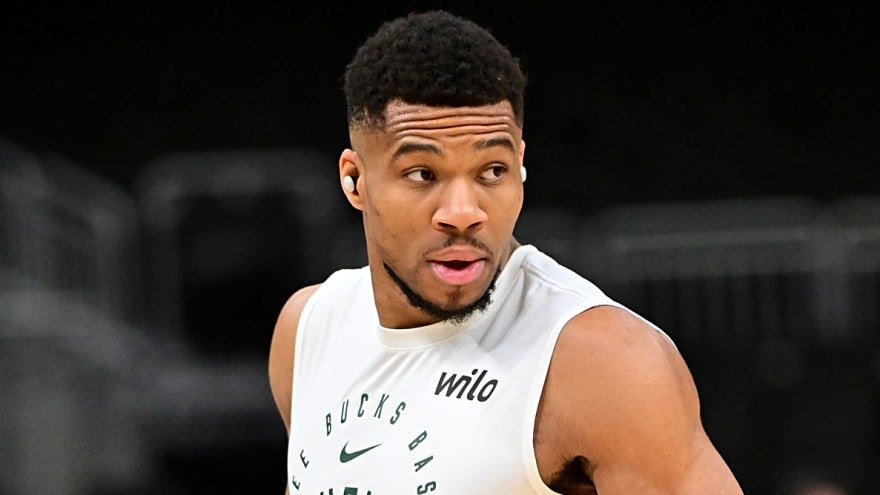
Report: Knicks made a signing based on Giannis Antetokounmpo trade belief
The New York Knicks aren't waiting for the offseason drama surrounding Giannis Antetokounmpo and the Milwaukee Bucks to end before taking care of a key signing for their roster this summer. Per Shams Charania of ESPN, the Knicks signed Mikal Bridges to a four-year deal worth $150M on Thursday. "New York Knicks forward Mikal Bridges has agreed to a four-year, $150 million contract extension with the franchise, agents Sam Goldfeder and Jordan Gertler of Excel Sports Management tell ESPN," Charania posted on X. "The new deal includes a player option for 2029-30 and a trade kicker." Bridges' extension might not have happened if the Knicks believed they had a serious shot to land an elite player in a trade this summer. Per Ashish Mathur of Hoops Wire, the Knicks made their decision to sign Bridges to a new deal after they learned Antetokounmpo plans to stay in Milwaukee. "The New York Knicks got intel that Giannis Antetokounmpo won’t request a trade from the Milwaukee Bucks before signing Mikal Bridges to an extension, an NBA source told Hoops Wire on Thursday," Mathur wrote. "...The Knicks would have pursued Giannis Antetokounmpo had the two-time MVP requested a trade from the Bucks. All signs point toward Antetokounmpo remaining in Milwaukee." Due to the player option Bridges has in his new deal, the guard cannot be traded for at least six months. Mathur's report signals the reality that New York wants to land another star to pair with Jalen Brunson. However, the Knicks might not make a big splash until the trade deadline next year. The Knicks need a big man who can score and play defense at a high level in the playoffs, something Karl-Anthony Towns was unable to do in the Eastern Conference Finals.

Report reveals if Commanders intend to trade WR Terry McLaurin
In the absence of progress at the negotiating table, Terry McLaurin went public with a trade request on Thursday. The chances of the Commanders dealing him away have long been viewed as low, and that remains the case at this point. A number of teams inquired with Washington about McLaurin prior to the news of his trade request. As Nicki Jhabvala and Dianna Russini of The Athletic report, though, the Commanders informed suitors they have no plans of moving on from the two-time Pro Bowler. The sides remain at an impasse regarding extension talks, so interest on the trade front will no doubt continue until and unless an agreement is reached. Albert Breer of Sports Illustrated notes a number of issues (including overall value and guarantees) are yet to be resolved in McLaurin’s case. That differs from, for instance, the case of Trey Hendrickson and the Bengals. The AAV of a new Cincinnati agreement appears to have been hammered out, but the sides are at an impasse with respect to guaranteeing more than the first year of any new pact. It remains to be seen general manager Adam Peters and the Commanders will be willing to reach or surpass $30M per year on a long-term contract. While remarking on the situation, one general manager told Russini they liken this case to that of Haason Reddick from last year. Reddick engaged in lengthy holdout with the Jets while seeking an extension following his trade from the Eagles. In the end, a short-term compromise was made but Reddick’s debut was delayed until Week 8 and he departed in free agency after an underwhelming campaign. Any similar absence through the regular season — something which, to be clear, McLaurin has not yet threatened — would of course be highly detrimental to a Commanders team aiming to duplicate last year’s run to the NFC title game. During a Friday appearance on the "Rich Eisen Show" (video link), NFL Network’s Tom Pelissero said a trade cannot completely be ruled out at this point. The Patriots are known to be a potential suitor in the event Peters’ approach changes and consideration is given to a swap. Such a move would leave Washington with trade acquisition (and pending 2026 free agent) Deebo Samuel atop the WR depth chart. However, the Commanders have a star quarterback on a rookie contract, opening up a clear competitive window for them to build around Jayden Daniels before he commands a market-level salary. That would seem to include investing in a perennial thousand-yard threat like McLaurin — who already has an impressive rapport with his young QB. Coming to an agreement with the soon-to-be 30-year-old feels like an inevitability, whether it be before Week 1 or partway into the regular season.
